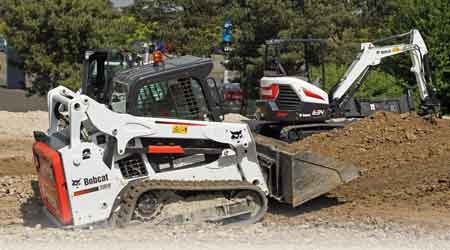 Comprehensive training can ensure that workers using rental equipment, including skid steer loaders, remain safe on the job site.Roman Korotkov / Shutterstock.com
Comprehensive training can ensure that workers using rental equipment, including skid steer loaders, remain safe on the job site.Roman Korotkov / Shutterstock.comEquipment Safety Training: Turning Training into Results
By matching department needs to available resources, managers can protect workers on the work site
Perhaps the most important step related to rental equipment safety is to prepare a written training policy that ensures staff actually puts the training to use. The year-to-year actual results are compared to the policy to measure actual training versus planned.
Testing and certifications must be required for all training, whether provided by in-house or by outside sources. This certification is crucial because all maintenance work involves following safe practices. A major part of the training will cover methods that are based on OSHA and other standards, such as those set by ASTM, NFPA, ANSI, and other standards bodies.
In the event of litigation, the fact that technicians received and used this training puts managers in a more favorable position. Courts consider untrained personnel more error prone. If they operated equipment involved in an accident, the business owner is more likely to be held liable for allowing them to operate it. The certification shows the course meets the standards and that the technician took the course and earned a satisfactory grade. In the case of an unsatisfactory grade, the technician must repeat the course until a satisfactory grade is achieved.
Another effective form of on-the-job training on rental equipment safety involves setting up a planning function in the maintenance department. Planners already are familiar with the equipment, and they have demonstrated the highest skill in the department for each type of work — mechanical, electrical, structural, painting, carpentry, grounds care, and custodial maintenance — for which the rental equipment often is used.
The planner lays out each job following a process that includes a work plan, safety precautions, crew size, material needed, special equipment and tools needed, permits and the time it should take to perform the job.
In addition to improving worker safety, planned jobs can increase productivity 20-30 percent. And managers do not need to hire new staff to replace the planners because of the productivity improvement created by planning.
Thomas A. Westerkamp is a maintenance and engineering management consultant and president of the work management division of Westerkamp Group LLC. Westerkamp is also author of "Community Association Manager's Standard Manual and Guide."
Related Topics:













